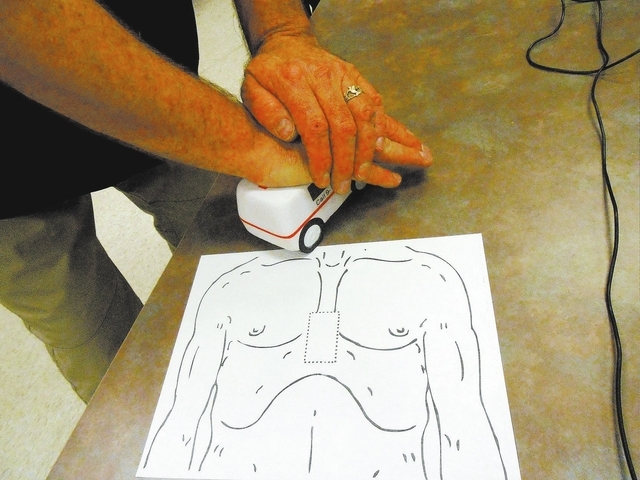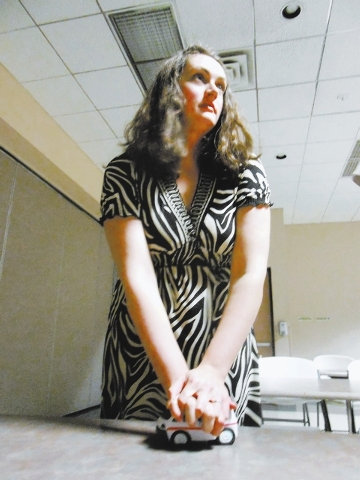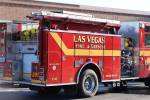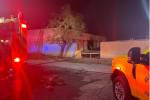CPR training program helps boost victims’ survival rate
If you’re going to have a heart attack, perhaps Las Vegas is the best place to do it. Firefighters save 30 percent of cardiac arrest patients, and the national average is 5 percent.
The numbers may climb even higher, thanks to a new effort begun this year in conjunction with the American Red Cross. It trains residents in chest compression cardio pulmonary resuscitation and how to use an emergency external defibrillator.
“It’s like having a small citizen army,” said Scott Johnson, president of Las Vegas Firefighters Local 1285, which has roughly 600 members. “It makes our job easier because we’re able to reduce the amount of time between a person suffering a cardiac arrest and us getting to the patient’s side.”
Since spring, firefighters have volunteered to teach residents to administer compression-only CPR. Trained residents can use the technique to assist cardiac arrest victims while firefighters respond to the scene. Generally, it takes four to six minutes for city firefighters to arrive on a scene.
One training session was held Nov. 13 at the Veterans Memorial Leisure Services Center, 101 N. Pavilion Center Drive. No one showed up.
Ted Ramey, the instructor that night, explained what the session would have consisted of.
A toy ambulance was used to demonstrate how hard one had to press a person’s chest. The object was to squish the tires. Ramey demonstrated the proper way to lace the fingers and how to determine the middle of the chest.
“Your first compression is going to break the ribs away from the cartilage,” he said. “When you press down, it will sound like you’re breaking chicken bones. It will crunch, audibly. You can definitely feel it through your hands and your arms. That’s good because you’re breaking the cartilage that holds your rib cage high, and breaking it allows the rib cage to come against the heart.”
When medical units respond to a cardiac arrest call, the captain gathers information, such as if there is a pacemaker or drug allergy. Another member of the unit sets up an intravenous line and administers drugs. A third person prepares a heart monitor to administer an electric shock to the heart, commonly known as defibrillation. A fourth person clears the patient’s airway with a suction technique while a fifth person inserts a tube into the patient’s throat to improve his breathing.
Ramey said some people shy away from doing CPR because of concerns about having mouth-to-mouth contact with patients.
“And others don’t want to be liable,” he said. “They wonder, ‘If I do it (CPR) wrong, am I going to be sued?’ But Nevada has a Good Samaritan law. You will not be sued.”
In 2008, Las Vegas firefighters responded to 89,000 cardiac codes. This year, Ramey said, Las Vegas Fire & Rescue is on track for 100,000.
In 2008, the American Heart Association introduced chest compression-only CPR. Studies published in the New England Journal of Medicine found that there was no significant difference in survival rates for people who received compression-only CPR when compared to traditional CPR.
Las Vegas’ 30 percent survival rate for cardiac arrest victims should be seen as a badge of accomplishment, but firefighters’ viewpoint is that it could be better. With residents’ involvement, they said, the number could improve.
“What we’re hoping is to raise it to 50 percent,” Johnson said.
Contact Summerlin/Summerlin South View reporter Jan Hogan at jhogan@viewnews.com or 702-387-2949.





























